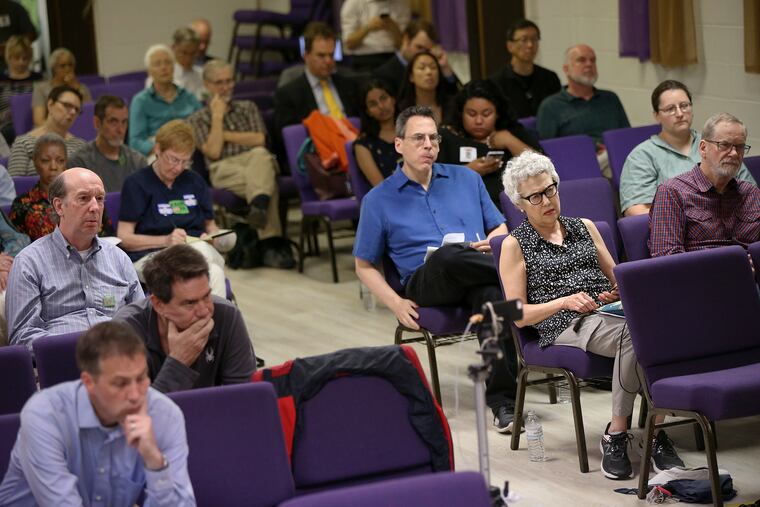2020 is year of the voter, and Pennsylvania should change election mapping accordingly | Opinion
In my decades of work in Pennsylvania politics, I’ve never seen a parade as persistent as the one supporting redistricting reform.

Beginning with Thanksgiving, and ending with the Mummers and other New Year’s celebrations across Pennsylvania, we’ve just emerged from parade season. But that season doesn’t have to end — parades are a useful concept to apply to political challenges for 2020 in Pennsylvania and nationwide. With intense interest in the presidential election, and predictions for record voter turnout, 2020 is certainly shaping up to be the Year of the Voter.
So in that context, what is the challenge for Pennsylvania’s political leaders? John Naisbitt, the self-styled futurist and mega-selling Megatrends author of the 1980s and ’90s, noted in one of his books that “leadership involves finding a parade and getting in front of it.”
I don’t think Naisbitt implied anything cynical about a leader’s instinct to find a parade rather than start one herself. Having watched and worked with elected officials over the last few decades, and taught a graduate course in public leadership for almost 10 years at Penn and Temple, I think it’s a perfectly rational response to a demanding world. Leaders thrive by succeeding, and while Hollywood rightly amplifies and celebrates the notion that leaders can and should take on all manner of Sisyphean causes, the pragmatic leader picks her spots carefully — sometimes getting out front, sometimes getting behind, and sometimes just getting out of the way.
Which brings us to gerrymandering and redistricting reform, the political issue that has most improbably captured the hearts and minds of many Pennsylvanians these last few years. In my decades of work in Pennsylvania politics and public policy, I’ve never seen a parade as long and persistent as the one that’s joined in support of redistricting reform.
Prime movers in building that parade include Common Cause, the League of Women Voters, and Fair Districts PA, a massive statewide and volunteer-driven campaign for redistricting reform. The numbers from Fair Districts PA alone suggest that it’s quite a parade:
100,000 Pa. citizens have signed a petition to end gerrymandering.
Over 60,000 citizens have joined the Fair Districts community to advocate around this issue.
351 political jurisdictions representing 8 million Pennsylvanians have passed resolutions to end gerrymandering.
My own nonpartisan organization, the Committee of Seventy, organized a statewide public mapping competition, Draw the Lines PA, that has engaged over 5,000 Pennsylvanians — as young as 14 — in the challenge of drawing their own congressional maps. It’s the largest hands-on exercise in participatory democracy in the history of our Commonwealth.
That’s all to prove the point that Pennsylvanians are ready, willing, and able to contribute to the important conversation about how their own districts should be drawn and how they should be represented.
I’ve also seen the parade form in my travels as chair of the Pennsylvania Redistricting Reform Commission, a bipartisan body of thoughtful citizens appointed last year by Governor Tom Wolf to listen to Pennsylvanians talk redistricting, and turn those thoughts into recommendations to the governor and legislative leaders. Our nine public listening sessions around the Commonwealth spurred over 1,500 people to share their thoughts with us either in person or online.
The nature, intent, and urgency of the parade were crystallized in a Franklin and Marshall public opinion poll released last fall. The poll revealed that however the data is sliced and diced, seven in 10 (67%) of Pennsylvania citizens support an independent commission and a transparent process to draw election maps.
Now the end is clear, and the time is near. To be in place for the next census count, which will be delivered in March 2021, a new process for drawing election maps will have to be approved by early this spring. Who will lead the parade that has formed?
Legislators from both parties and chambers in Harrisburg have come forward into the front ranks of the parade, and they deserve credit for their bipartisan persistence. But more leadership is needed to cross the finish line, because leadership is ultimately about achieving results, not being part of a process.
Harry Truman, the haberdasher president from Independence, Missouri, noted famously: “It is amazing what you can accomplish if you do not care who gets the credit.” Thousands of Pennsylvania citizens who have taken time away from their jobs and families the last few years to join the parade for reform don’t care who — liberal or conservative, Republican or Democrat — gets the credit for leading the parade to fair maps.
Our citizens simply march to get what they deserve: a well-functioning, truly representative, and fairly-determined local democracy.
David Thornburgh is president and CEO of the Committee of Seventy.